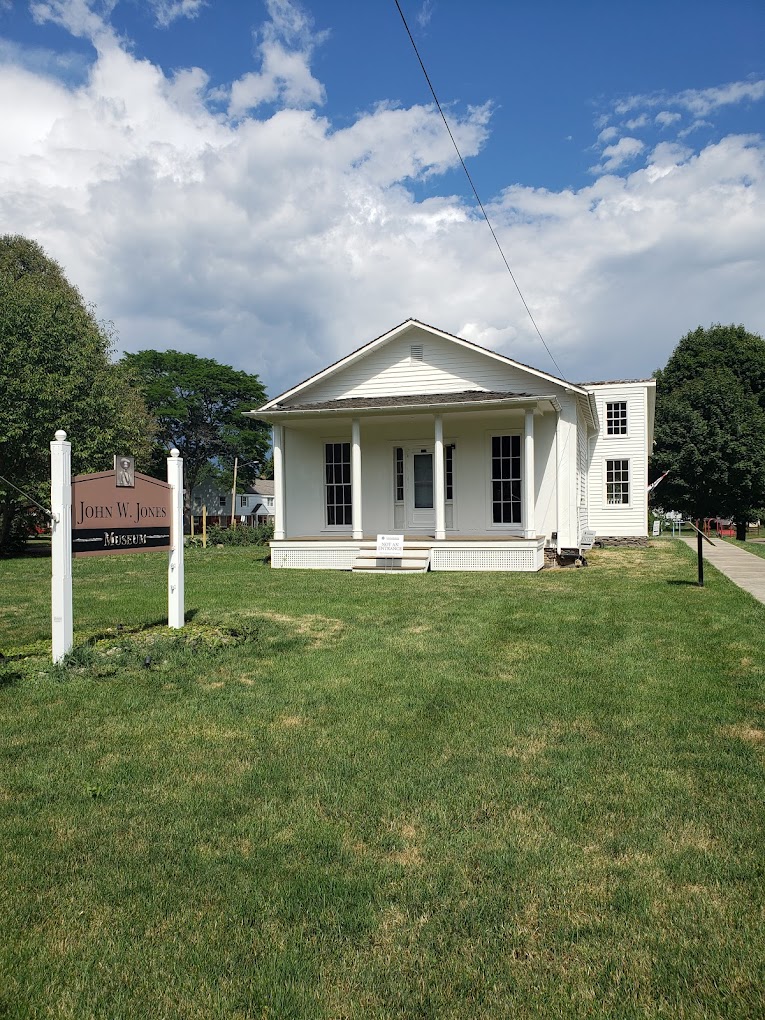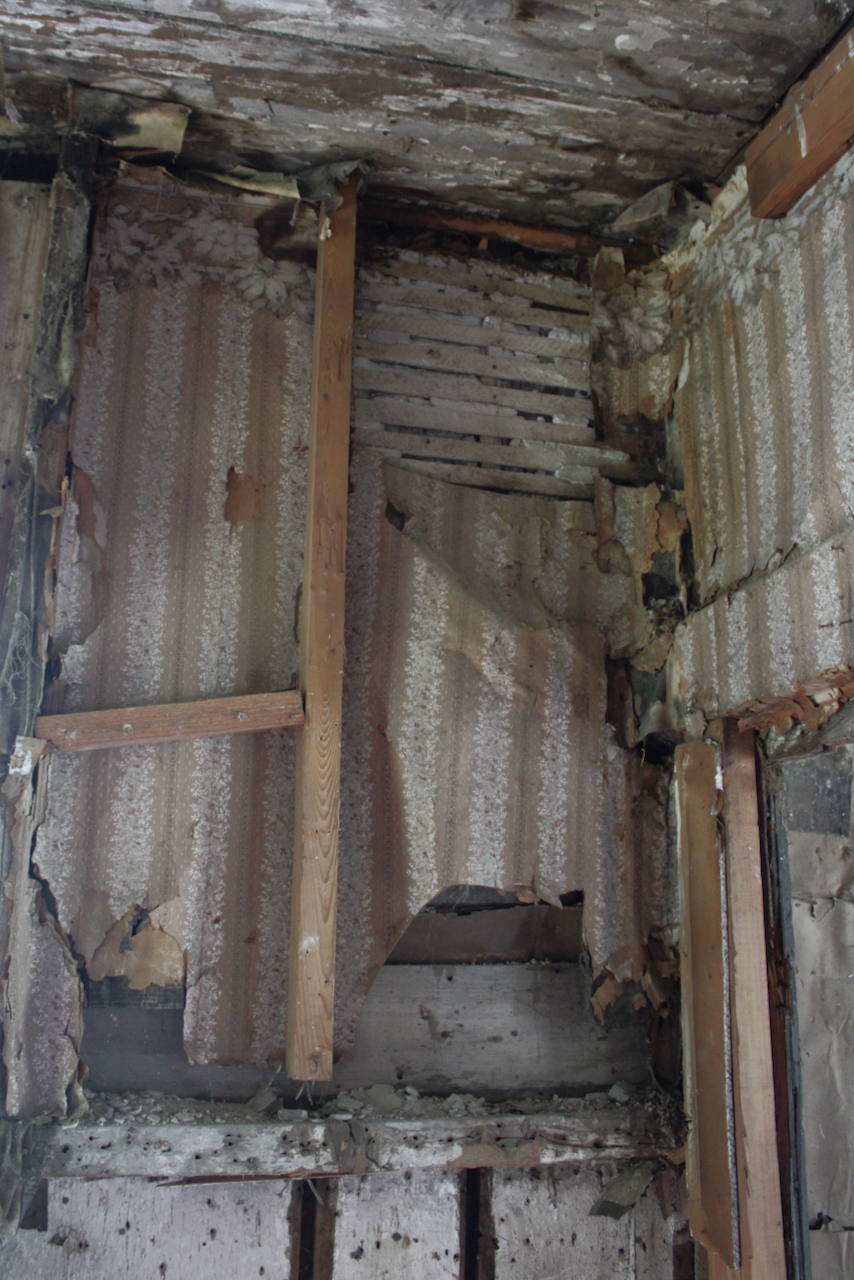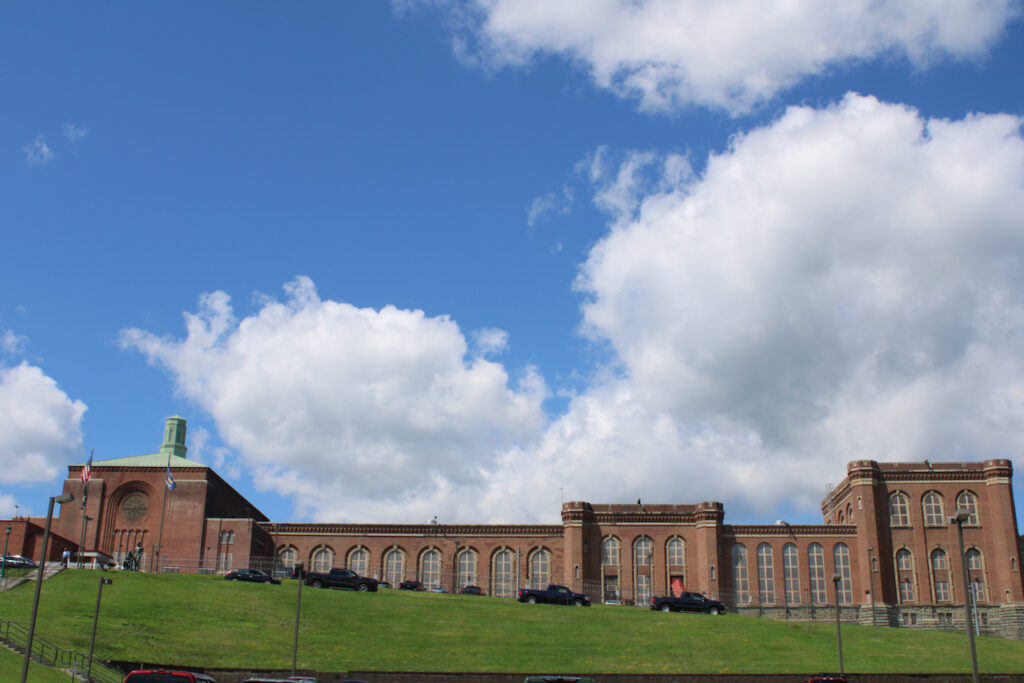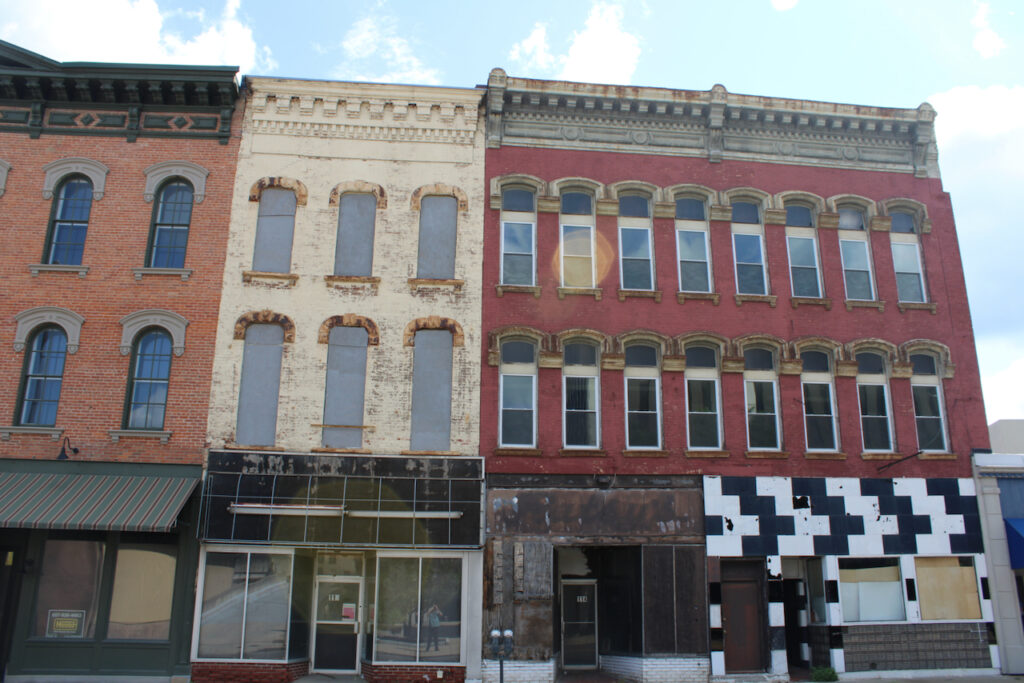Every place is a palimpsest with layer upon layer of history written atop one another. Every so often you have the opportunity to scratch below the surface and see the strata of history.
One of those places where the layers become visible is across the street from Woodlawn Cemetery on the outskirts of Elmira, New York. A tidy white farmhouse with a jaunty shed edition at the back was the home of John Jones, one of the most remarkable historical figures I’d never heard of. Jones and two half brothers were born into slavery in Northern Virginia. Their owner, by all indications, a kind woman who believed she would get more work out of her enslaved people if she treated them well, decided to sell her plantation and her property, which included Jones and his siblings. So they fled 300 miles over land over the course of a month in the summer of 1844 and made their way to Elmira, New York.

The John Jones House Museum in Elmira
Jones, for a while, lived in the house of Jervis Langdon, one of the wealthiest men in town who was an ardent abolitionist. But Jones found work quickly first splitting wood, and then later working as the Sexton for the first Baptist Church. Soon, he was living on his own, and his modest house became a major stop on the Underground Railroad, sometimes housing up to twenty escaping enslaved people at a time. Elmira, in the mid-1800s, was well connected to the emerging rail network, with direct connections to Niagara Falls and on into Canada. Jones worked with a black station master in Philadelphia, corresponding in code to make arrangements, to get enslaved people who had escaped to Elmira onto the 4 a.m. baggage car, and from there, across the Canadian border to freedom. Ultimately, Jones was responsible for the escape of 860 former slaves, none of whom were returned to the South.
But that’s not the most remarkable part of Jones’s story. After being Sexton for the Baptist Church, Jones took over as Sexton for a cemetery in town, and then for Woodlawn Cemetery, the massive and beautiful graveyard on the edge of town. Woodlawn was next to a prison camp set up at the Union Army base in Elmira. The camp where Union soldiers from all over upstate New York had mustered before going to fight in the Civil War ended up housing 12,000 Confederate prisoners in the whitewashed barracks built to house 5,000. The conditions were dire, and thousands of Confederate prisoners died during their internment in Elmira.
Each of the prisoners was buried either by or under the supervision of Jones, who took exacting care to ensure that Confederate soldiers were buried with all available information, so that their families would be able to find them. Whatever information was available about a soldier was scratched into their wooden coffins, was carved into a wooden tombstone and was written on a piece of paper sealed in a bottle tucked under the dead man’s arm.
For each Confederate soldier buried, Jones received $2.50, money that he used to purchase a 16-acre farm across from Woodland Cemetery. He built this tidy farmhouse, in no small part, from boards salvage from those barracks turned prison camps. John Jones buried – with care and dignity – over 2,000 men who were fighting for the right to keep him in bondage.

Jones museum docent Cleveland shows me a civil-war quilt.
Cleveland, the wonderful docent at the John Jones Museum, showed me his favorite room. It’s a room in which the layers of wallpaper over the whitewashed barracks boards are visible. The scholars who studied the house have found nine layers of wallpaper likely put on to help insulate the drafty house. You can see rags that have been stuffed in the crevices to seal out the Elmira winter. Cleveland points to the water stain and says, “You can tell he was trying to keep his house dry, but it was an uphill battle.”

A corner of walls and ceiling in Jones’s house, showing layers of wallpaper and rag insulation. The white boards at the bottom are from the Union barracks which became Confederate cells.
A few hundred yards from the Jones house, Samuel Clemens – Mark Twain – is buried in the Langdon family plot, not far from Jervis Langdon, who sheltered Jones when he first came to Elmira. After his childhood on the Mississippi River, Clemens followed his elder brother to Nevada to become a silver prospector. He was so bad at it that he found his true calling – making people laugh, first with stories about his own ineptitude at prospecting, and eventually about his childhood, his travels and the stories he collected along the way. Writing for the Nevada territorial paper, one of his stories – “The Celebrated Jumping Frog of Calaveras County” – became a sensation in New York, and Clemens began astounding career of writing and public speaking.
Clemens was, in essence, a stand-up comic and toured the world to an extent that is absolutely remarkable for someone living in the 19th century. While on a steamboat tour of the Holy Land, he met Charles Langdon, son of Jervis Langdon, who showed Clemens a picture of his sister, Olivia. Clemens was smitten to the point where he came to court her at her summer place in Elmira, returning and corresponding with her until she agreed to marry him, in Elmira, in 1870.

Mark Twain’s octagonal study, now on the grounds of Elmira College.
Sam and Olivia spent every summer at her sister Susan Crane’s farm. Susan built Clement perhaps the world’s most lovely writing shed, an octagonal gazebo-like shed with wide windows on all sides where Clement could write and, critically, smoke his cigars which she forbade in the house. In Hartford, CT and in the shed in Elmira, Clemens wrote Huckleberry Finn, Tom Sawyer and most of his other works. The shed sits now on the campus of Elmira College, the first women’s college to teach women with the same curriculum as men’s colleges, rather than preparing them for life as wives and mothers.

Elmira reformatory, now Elmira Corrections Center.
The writing shed, the handmade farmhouse and the graves of Clemens, the Langdon family, and Jones are within walking distance of one another, and of the thousands of confederate graves Jones dug. And just beyond the graveyard is the Elmira Reformatory, where superintendent Zebulon Brockway attempted to reform his charges through imposing military discipline, a model that spread from Elmira to prisons throughout the country. Between the Reformatory and the Civil War prison camp, Elmira got the name of “Zebra Town”, a town that corrections built. A 2010 book by journalist Greg Donaldson, titled “Zebratown”, examines how Elmira has become home for many black men who, during their incarceration, develop relationships with people living in small towns and chose to reenter society through a town whose glory days, to some extent, preceded the Civil War.

Downtown, near the history museum, Elmira, NY
There’s not much to downtown Elmira these days. A massive flood in 1972 destroyed much of the city, and 40% of the buildings in the downtown were torn down rather than refinished, in part, because the Southern Tier as a whole, was facing shrinkage due to the industrialization. Other towns in the area, like Binghamson, which I visited yesterday, and Corning just down the road, seem to have navigated this transition between the industrial and the post-industrial with more agility.

Pro-abolition potholders from the mid 19th century. Chemung Valley History Museum
The Chemung Valley History Museum is filled with artifacts of Clemens, of abolition, of proud memories of an amusement park not far from Woodlum Cemetery that closed in the 1980s. But the last plaque in the museum describes Elmira after the 1972 flood as a city “poised for growth”, a polite way of noting that the growth in question is yet to come.
But on the edge of town is a white farmhouse built from the boards from a Confederate prison camp by a man who escaped slavery, who bought his farm with money earned from burying, with care and dignity, the bodies of men who fought to enslave him. The nine layers of wallpaper and rags created a warm spot in the Elmira winters for a man who helped over eight hundred enslaved people find their freedom. Cleveland, the museum docent, explained that Confederate family had come in wagons after the war to take their dead home. They assumed they had been dumped in graves by the Yankees, as Union soldiers had been in the South. They found the carefully carved wood and markers and the well-tended grave sites that Jones, living across the street, had maintained and decided to let their dead rest in peace.

If you are
Coming through Olean, I would be glad to show you around
Thank you so much for writing this!